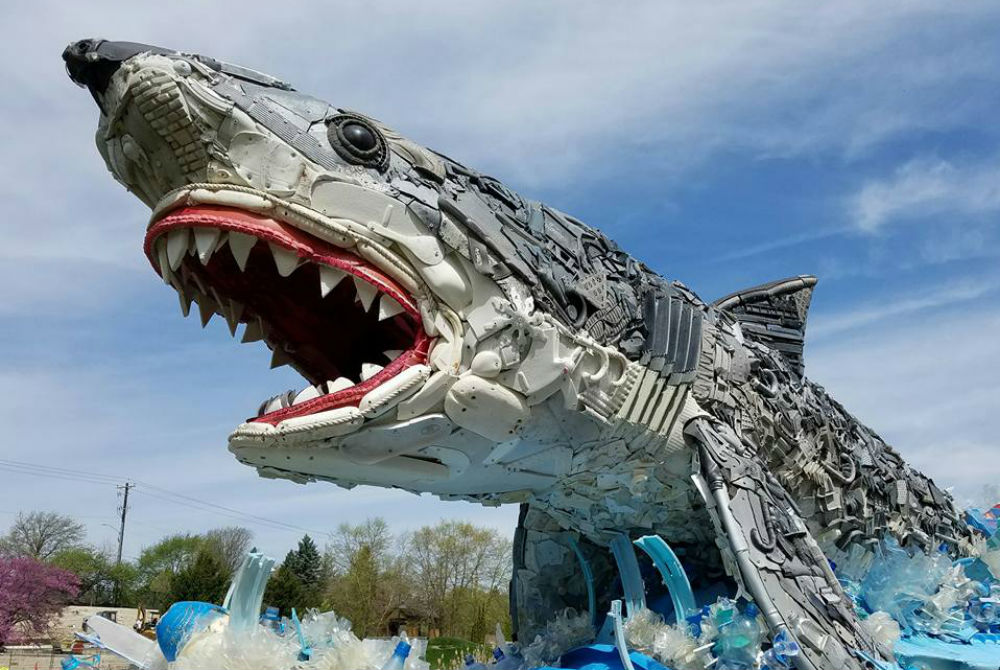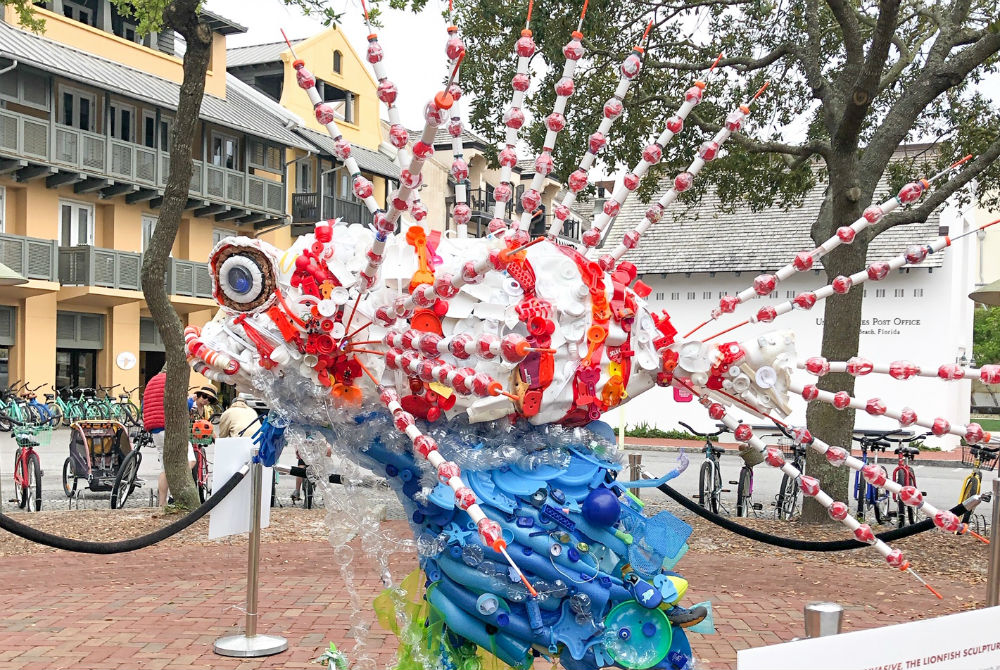
Photo credit: The Washed Ashore Project via Facebook
While art has always been appreciated for its beauty and for the feelings it creates in the onlooker, it can also be a powerful catalyst for societal and environmental causes.
Washed Ashore, a non-profit art project, was founded as a way to open people’s eyes to the growing problem of the debris and trash that litter our seas and oceans.
What Is Washed Ashore?

Angela Haseltine Pozzi, Founder & Artistic Director, The Washed Ashore Project.
This organization was founded in 2010 by Angela Haseltine Pozzi. She, like many others, had noticed the large quantity of plastic coming in with the tide on the beaches she visited. Instead of merely picking up the trash and moving on, she decided to do something about it.
One of the most effective ways to change the world is through education. To show people just how real the issue of trash in our waterways is, Washed Ashore takes and processes the plastic that washes up on the shorelines and uses it to create beautiful and thought-provoking art.
The effort has grown since its one-person beginnings. Now it has thousands of volunteers, collecting the plastic debris, and constructing the giant sculptures in the shape of animals who are being killed or threatened by all the pollution littering our oceans.
The Plastic Problem
Every year, approximately 300 million pounds of plastic is made. While recycling efforts continue, not even 10 percent of the plastic produced annually is recycled.
Some of that plastic makes its way into our waterways where it does considerable damage to the ecosystems and the animals who live there. Birds, turtles, whales, and other creatures are killed by eating plastic or getting trapped in it.
Some estimates say the weight of plastic in the water will be more than the weight of fish in the water within 30 years.
Places to View Washed Ashore’s Exhibits
While Washed Ashore first began in Oregon, it has since taken off, spreading to other areas as well.
Some of the places you can visit to see traveling exhibits include:
– Tulsa Zoo in Tulsa, Oklahoma until January 5, 2020.
– Toronto Zoo in Toronto, Ontario until November 17, 2019.
– Hogle Zoo in Salt Lake City, Utah until September 30, 2019.
– William J. Clinton Presidential Library and Museum in Little Rock, Arkansas until October 27, 2019.
– Smithsonian National Museum of Natural History in Washington, D.C.
The Washed Ashore project has also inspired budding artists still in school, teaching them about what they can do to help spread the message and protect our oceans.

Invasive by Ohana Institute
In Rosemary Beach, Florida, the biennial Rosemary Beach Sculpture Exhibition features a student art effort inspired by the Washed Ashore program. A sculpture of a lionfish, made from plastic gathered from the Gulf, was created by students from the Ohana Institute in Seaside. That’s just one of the many art pieces displayed outdoors at Rosemary Beach until Feb. 14, 2020.
What You Can Do to Fight This Problem
Even if you don’t live by the coastal regions, you can combat this plastics problem. You can:
– Recycle
– Stop using single-use plastics like water bottles, plastic bags, and straws.
– Stop using products that contain microbeads, like body washes and face scrubs.
 SHANNON SERPETTE is an award-winning journalist, having received 10 Illinois Press Association writing awards across a wide variety of categories. An avid metal detectorist, Shannon spends most of her vacations at the beach searching for buried treasure. Follow her daily adventures on Twitter.
SHANNON SERPETTE is an award-winning journalist, having received 10 Illinois Press Association writing awards across a wide variety of categories. An avid metal detectorist, Shannon spends most of her vacations at the beach searching for buried treasure. Follow her daily adventures on Twitter.

